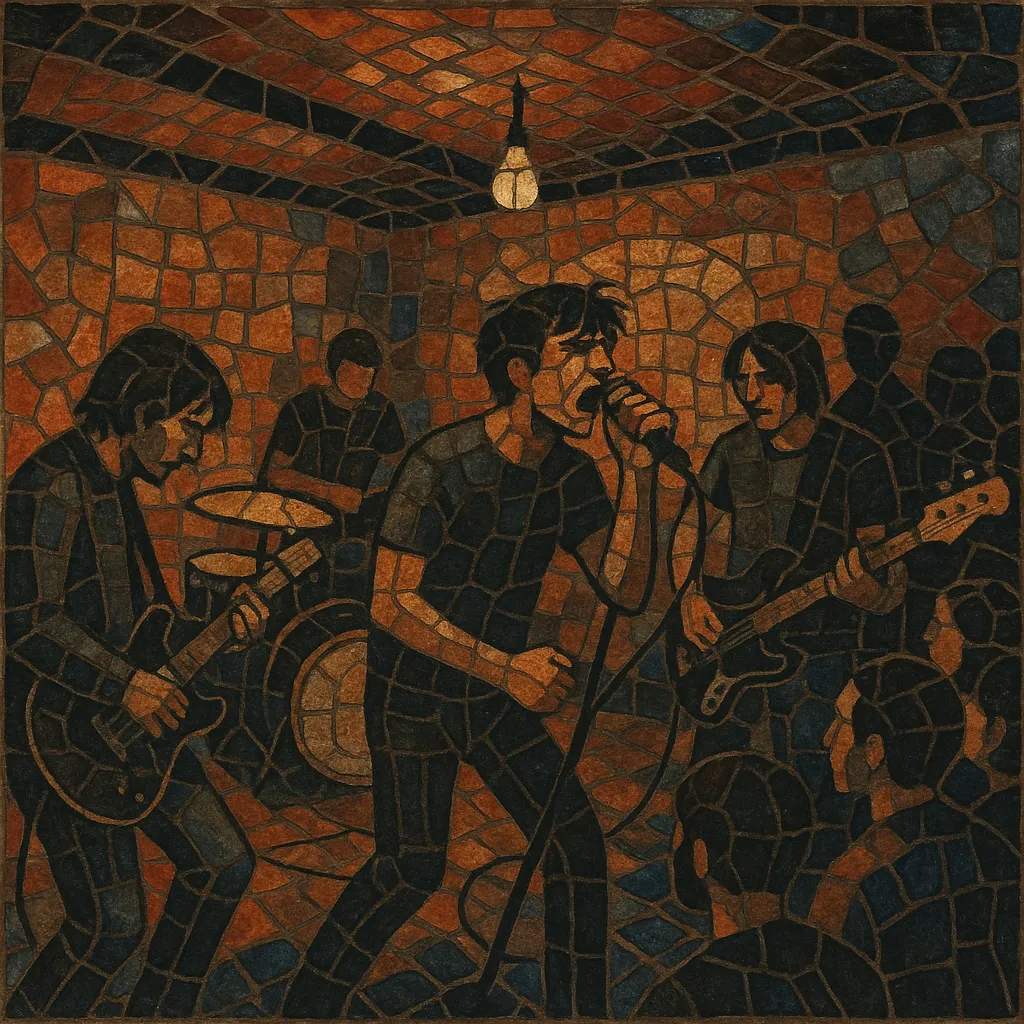
The New Brunswick basement scene refers to the long-running, DIY network of house shows centered around New Brunswick, New Jersey (especially near Rutgers University), where bands perform in residential basements rather than formal venues.
Rooted in punk, hardcore, pop punk, emo, and indie rock, the scene prioritizes community, accessibility, and self-sufficiency: all-ages shows, low cover charges, hand-made flyers, and word-of-mouth addresses. Sonically, it spans fast, cathartic punk and hardcore sets to emotive, hook-forward indie and pop punk, with raw, close-mic’d recordings that reflect small, crowded spaces.
Culturally, the scene is as much about ethos as sound—booking each other’s bands, releasing tapes and 7-inches, and sustaining a rotating ecosystem of short-lived houses and collectives that continually renew the local music pipeline.
New Brunswick’s college-town density, proximity to NYC/Philly, and a long New Jersey punk lineage (Court Tavern, local VFWs, and DIY storefronts) fostered a basement-show network by the early–mid 1990s. Bands associated with NJ pop punk and melodic hardcore—along with ska-punk and indie—found a consistent, all-ages alternative to traditional clubs.
Through the 2000s, rotating houses solidified the model: unlisted addresses, low door donations, and community-first booking. Bands cultivated intense crowd engagement—room-filling singalongs, gang vocals, and high-energy sets optimized for tight spaces. Affordable, analog-leaning recording and tape/7" culture kept releases accessible and scene-centered.
As alumni bands toured nationally, the New Brunswick basement scene’s ethos influenced DIY house networks across the U.S. Screaming Females, The Ergs!, Lifetime-related projects, and Thursday’s early traction spotlighted the city as a reliable stop for punk, emo, and indie circuits. The scene’s continuity despite frequent venue turnover became a defining feature.
Despite periodic scrutiny and houses changing hands, the model persists: small-capacity rooms, community organizing, and inclusive, low-barrier shows that emphasize participation. The aesthetics—raw immediacy, melodic urgency, and emotionally direct lyrics—remain a touchstone for newer punk, emo, and indie bands nationwide.

